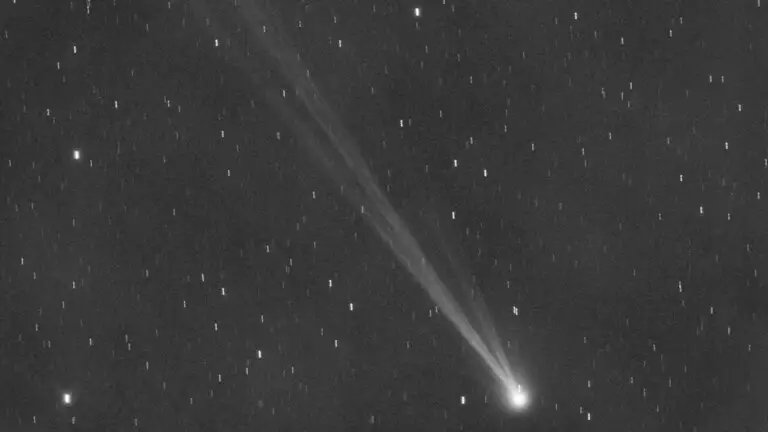Rare Green Comet “Nishimura” to Grace Northern Hemisphere Skies After 400 Years
A spectacular celestial event is about to unfold in the Northern Hemisphere as a rare green comet, dubbed “Nishimura” after its amateur Japanese discoverer, approaches Earth. This remarkable comet, not seen for over four centuries, is approximately half a mile in diameter and is set to come within 78 million miles of our planet on September 12, as reported by the Associated Press.
If you’re eager to catch a glimpse of this cosmic visitor, set your alarms 90 minutes before dawn and direct your gaze northward, about 10 degrees above the horizon, near the constellation Leo. As Nishimura draws closer to the sun, it will shine brighter in the sky. However, as it descends lower, spotting it will become increasingly challenging.
Binoculars and Knowledge Required
Paul Chodas, the manager of NASA’s Center for Near-Earth Object Studies, advises aspiring comet-watchers to come prepared. To spot Nishimura, you’ll need a good pair of binoculars and a basic understanding of where to look.
On September 17, Nishimura will venture closer to the sun than Mercury. Its fate hinges on whether it can withstand the intense solar encounter without disintegrating. Chodas remains optimistic, suggesting that the comet is “likely to survive its passage.” If it does, folks in the Southern Hemisphere might catch a glimpse towards the end of September.
Last Chance for 400 Years
Italian astronomer Gianluca Masi, founder of the Virtual Telescope Project, emphasized that the upcoming week offers the “last, feasible chances” to observe this extraordinary comet. The last time Nishimura came this close to Earth in the Northern Hemisphere was a staggering 430 years ago. Masi also shared his excitement, describing the comet as “amazing” with its long, well-structured tail, a true delight for telescope enthusiasts.
Remarkably, amateur astronomers like Nishimura are rare discoverers of such celestial events, given the extensive use of powerful ground telescopes in professional sky surveys.
In a nod to the amateur astronomer’s success, Chodas remarked, “This is his third find, so good for him.”
So, if you’re keen on witnessing this once-in-a-lifetime spectacle, grab your binoculars and make sure to set your alarm. The Northern Hemisphere’s skies are preparing for a celestial show that won’t return for another 400 years.
(The Associated Press contributed to this report.)

